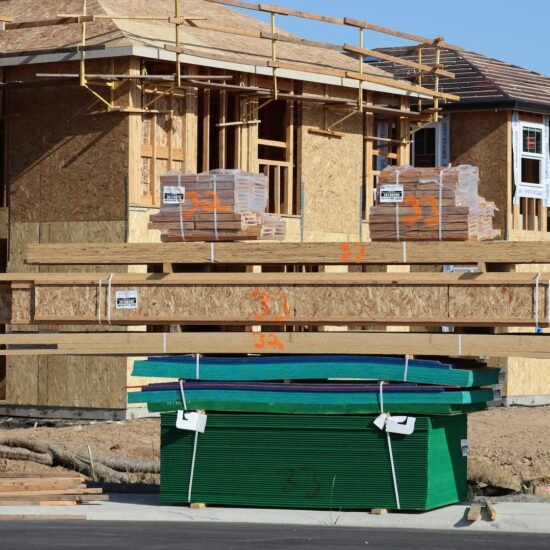
HOA Detective™ | 11/18/2025: In 1996, a young HOA Detective™ spent several months in Japan, living north of Tokyo in Saitama Prefecture. While there, I was introduced to something that felt, at the time, like science fiction: the 50‑year mortgage. Even in the face of Japan’s notoriously high housing prices, the idea of a loan lasting half a century felt surreal. I returned home and spent the next three decades predicting that the United States would eventually suffer the same fate.
2025 – Here We Are: One-quarter of the way into the 21st Century, the 50‑year mortgage has officially arrived on American shores. To paraphrase the Samuel L. Jackson character in the movie Jackie Brown –
“I hates to be one of those guys who says “I told you so,” but I gots to be one of those guys.”
This moment is more than a financial milestone. It is a cultural marker, a symbolic tombstone planted squarely in the middle of the “American Dream” as traditionally understood. It also represents the slow‑motion collapse of the Garden City ideal championed by Ebenezer Howard – the philosophical and ideological ancestor of the HOA‑driven housing ecosystem that now dominates modern American life, a scant 97 years after Howard’s death.
The New Housing Reality: The core tenet of the 20th-century version of the American Dream was simple. Work hard, save responsibly, buy a home, pay it off within a generation, and build equity. Live out your life in a home that is free of debt and a financial legacy for your heirs.
In the 21st-century version of the American Dream, a different set of foundational cornerstones now shape the new housing reality for most Americans, while the citizens in many other countries struggle with the same untenable conditions:
- A 50‑year mortgage is not a wealth‑building tool – nor is it a legacy for anyone except the lender.
- A 50-year mortgage is a lifelong financial tether – it is a contractual lasso that leaves the borrower chained to the rock pile, metaphorically speaking.
- A 50-year mortgage debt breaks the social contract implicit in the 30‑year mortgage standard, which broke the social contract implicit in the 20‑year mortgage that was the standard during your parents or grandparents’ era.
- A 50-year mortgage debt transforms homeownership from a pathway to long‑term stability into a perpetual burden – one that many borrowers will never outlive.
- The 50-year mortgage is not a home ownership model – it is a “life-long rent from the bank” place of residency model.
- In short, the 50‑Year Mortgage Marks the End of the American Dream.
The Ghost of Ebenezer Howard: The arrival of 50-year mortgages also symbolizes the failure of Ebenezer Howard’s Garden City vision. As regular followers of this blog know, Ebenezer Howard believed that orderly, cooperative, semi‑privatized communities would provide a balance between urban chaos and density, and the more livable and healthier “country” lifestyle he witnessed in late-Victorian England.
Howard’s Garden City ideals were meant to blend social equality, responsible land stewardship, and community self-governance into a near state of Utopia. His 19th century vision has served as the inspirational DNA of the modern HOA‑based housing development model that now dots the landscape in the U.S., and beyond.
The 50‑year mortgage exposes the fragile nature of this vision. Howard assumed housing would remain modest, affordable, and socially balanced, leading to financially and physically sustainable communities. Instead, American housing metastasized into a financialized commodity, fuel for speculative investment, private‑equity portfolios, and politically protected scarcity.
Adding fuel to this smoldering fire is that few, if any, of the residential developments inspired by Howard’s Garden City vision were built to last 50 years or more. Howard did not envision a population that would be forced by necessity to live in high-rise buildings, or the generation of homeowners who would be left with an aging housing inventory, at the same time the price of housing is skyrocketing faster than a SpaceX rocket headed to Mars.
The 50-Year-Old High-Rise Conundrum: As regular readers also know, most HOAs are financially bereft by the time the development reaches 30 years of age, much less 50 years. Shifting the focus to high-rise condominium housing, and applying the 50-year mortgage model, at 40 to 50 years, most HOAs are hanging on by the skin of their financial teeth.
To put it bluntly: after 50 years, the common interest housing scheme starts to come unraveled at the seams! Few HOAs in the U.S. and Canada are prepared to pay for the major maintenance and renewal of a high-rise condominium building 50 years after it is built. Issuing a 50-year mortgage to facilitate the purchase of a condominium in a 50-year-old building means the collateral must remain a viable real estate asset for ANOTHER half century.
Most U.S. Homes Are Not Physically Durable Enough for 50‑Year Financing:
Japan’s 50‑year loans work because Japanese housing – particularly urban multifamily buildings – is built to stringent seismic and structural standards. Even then, many Japanese houses are considered “temporary” structures that depreciate like cars.
In the U.S., the problem is much worse, even if we are not talking about high-rise condominium buildings. The cold, hard reality of U.S. housing is as follows:
- The overwhelming majority of American homes – especially post‑1990 construction – are not engineered for 50 years of reliable service without major capital reinvestment after year 30.
- Wood‑framed suburban houses require expensive and recurring exterior maintenance every 15–25 years.
- Townhomes and attached housing amplify structural stresses and shared‑element complexity.
- High‑rise condominiums – supposedly the most “durable” housing stock –often struggle to remain sound for even 30 years without multi‑million‑dollar capital spending.
- The declining quality of many manufactured goods only exacerbates the problem, whether it is an entire elevator system or a tiny subcomponent of the building’s plumbing system that is buried deep within the walls, floor, and attic of the building.
A mortgage should NOT be intentionally designed to outlive the underlying collateral. Yet under this concept, it is exactly the case with the new 50-year mortgage model.
This mismatch sets the stage for catastrophic future losses, insurance failures, HOA insolvencies, and government intervention on a scale the U.S. has never seen.
Inheriting the Family Mortgage – Coming Cultural Shift: In Japan, it is normal – and often expected – for children to inherit their parents’ mortgage. Debt becomes multi‑generational, a family obligation passed down like DNA. If 50‑year mortgages proliferate in the U.S., lenders will inevitably push for similar frameworks:
- Transferable mortgage obligations
- Multi‑borrower generational underwriting
- Debt that outlives the borrower
- Families are obligated to “continue the payments” after a parent’s death
This would fundamentally alter the American conception of housing.
Homeownership would no longer be a milestone of independence – it would be a dynastic liability.
The Real Issue: The United States Has No Coherent Housing Policy: Perhaps the greatest tragedy of the 50‑year mortgage is what it reveals about American governance, which is that the U.S. does not have a federal housing policy. The U.S. has:
- No national housing affordability strategy.
- No long‑term standardized urban‑planning framework.
- No functional guardrails on speculative real estate investment deals.
- No consistent subsidy strategy for first‑time buyers.
- No national standard for HOA oversight or reserve adequacy.
Instead, housing policy is an accidental patchwork of:
- Federal lending guidelines.
- Local zoning, planning, and permit-issuing fiefdoms.
- Private‑equity investors have turned U.S. housing into a financial commodity.
- HOA‑driven privatization results in needless layers of for-profit service providers.
- Politically motivated land use policy.
50-Year Mortgage is Not the Solution: The 50‑year mortgage is a pressure‑release valve for a system too politically calcified to confront the root problems:
- Decades of chronic underbuilding.
- Zoning and planning policies that INCREASE the cost of new housing.
- Policies that incentivize builders to build only high‑end housing.
- Financialization of the single‑family housing market.
- Lack of first-time buyer assistance.
- Minimal federal investment in infrastructure to support growth.
Allowing people to pay twice as much for the same house is not a policy.
It is an admission of failure. If 50‑year mortgages become normalized, expect cascading consequences:
- Ownership Rates Will Continue to Fall – even with longer terms, affordability will remain strained.
- Fewer people will qualify. Fewer people will even want to own a home. Those who do will never escape from debt.
- The wealth gap will widen – home equity has long been the primary wealth ladder for middle‑class Americans.
- Extend mortgages to 50 years, and the wealth ladder collapses.
Existing HOAs Will Face Even Greater Stress: A 50‑year horizon requires massive reinvestment in aging housing stock. Yet most HOAs already fail to meet even 30‑year reserve requirements. Assume the worst and expect the following:
- More special assessments.
- More HOA bankruptcies.
- More deferred maintenance.
- More political infighting.
- More structural failures.
Drifting Closer to a Semi‑Feudal Model: Multi‑generational housing will become a necessity, not for cultural reasons, but because one mortgage will now consume two lifetimes. When property becomes unattainable except through inheritance, the natural endpoint is a “landed class,” and by default, a perpetual tenant class.
America has flirted with this divide for decades. The 50‑year mortgage is a disgraceful, and not-so-subtle acknowledgement that the landed gentry has returned.
Conclusion: The U.S. is at a Crossroads: The arrival of the 50‑year mortgage in the U.S. is not a financial innovation. It is a flashing warning light on the national dashboard. An indicator light telling us the existing system is unsustainable, inequitable, and structurally unsound. A mortgage should empower families, not chain them for life to the proverbial rock pile.
Housing should be supported by a structurally solid foundation, not a foundation of debt. A nation as wealthy as the United States should not require its citizens to mortgage their entire lives for shelter. As the dust settles on the American Empire, the 50‑year mortgage stands like a grim sentry at the gates of the Garden City dream of a man named Ebenezer Howard: silent, immovable, and accusing.
Because You’re Buying More Than a Home!






